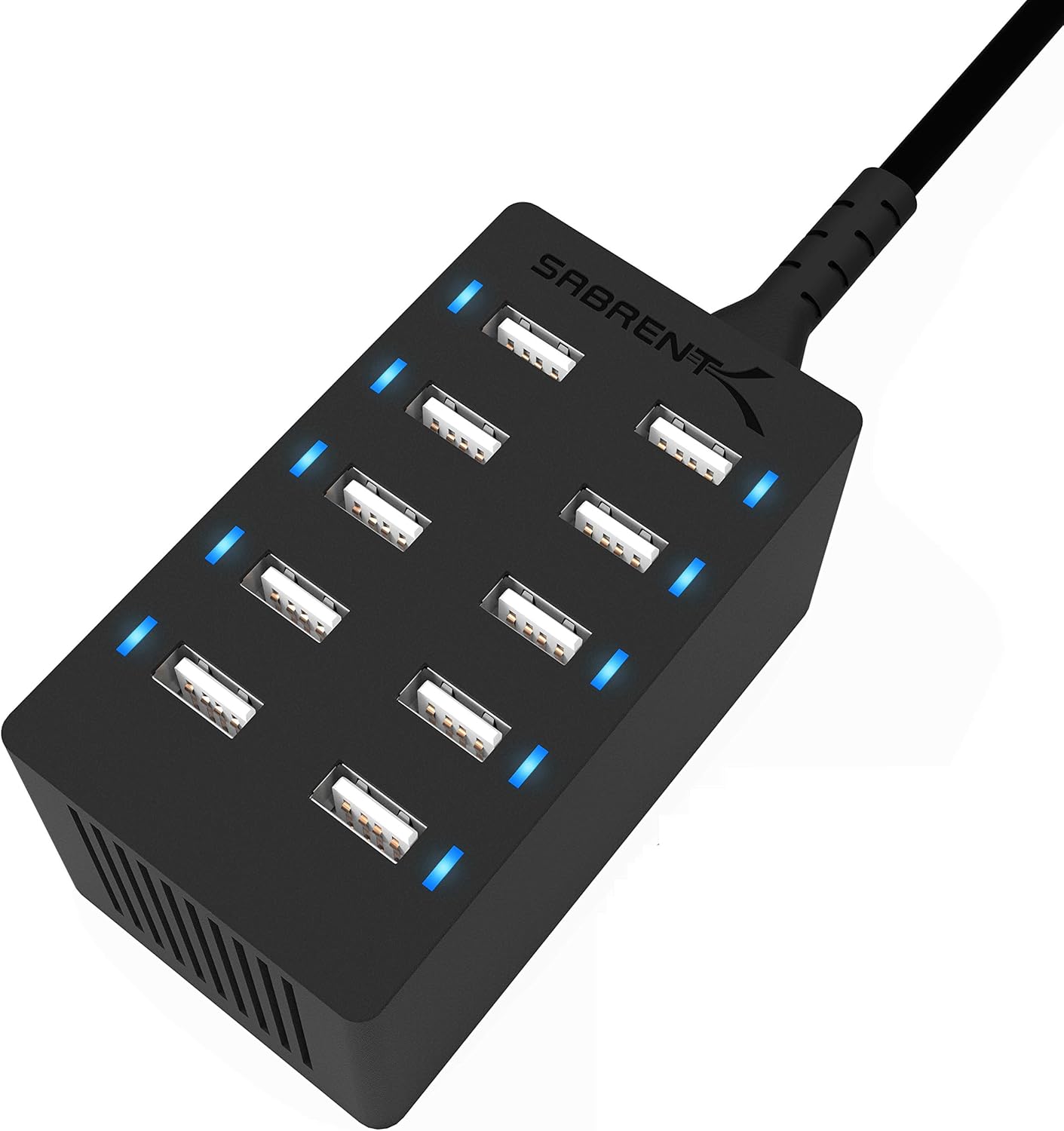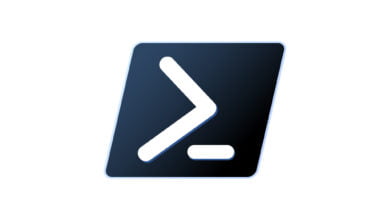Cobalt Strike Unleashed: Advanced Tactics for Red Team Operations
Elevate Your Penetration Testing Skills with Cobalt Strike

Alright, BugBusters, gather around! If you’re serious about taking your red team game to the next level, you’ve come to the right place. Welcome to our deep dive into Cobalt Strike—your ultimate tool for simulating real-world attack scenarios. Whether you’re looking to outsmart the latest security defenses or just want to sharpen your cyber claws, mastering Cobalt Strike is your ticket to the big leagues.
Why Cobalt Strike, you ask? Imagine you’re a modern-day Sherlock Holmes, but instead of a magnifying glass and deerstalker hat, you have cutting-edge cyber tools at your disposal. Cobalt Strike is like having the entire Baker Street Irregulars working for you—powerful, precise, and ready to help you uncover vulnerabilities and secure networks.
In this guide, we’re not just skimming the surface. We’re diving headfirst into the advanced features and strategies that make Cobalt Strike the tool of choice for elite red teamers. Think customizing payloads that slip past defenses like ninjas, conducting spear-phishing campaigns that would make even the most paranoid users click, and bypassing security measures like a seasoned pro.
But why does this matter? In the fast-paced world of cybersecurity, staying ahead of the curve is crucial. Cyber threats evolve, and so must we. By mastering these advanced tactics, you’ll enhance your penetration testing skills and build a reputation as a formidable force in the cybersecurity arena.
So, strap in and get ready to explore the depths of Cobalt Strike. We’re about to embark on a journey through payload customization, spear-phishing wizardry, security bypasses, and more. By the end of this guide, you’ll be equipped with the knowledge and skills to execute red team operations that are effective and truly exceptional.
Let’s dive in and level up your red team operations with Cobalt Strike!
Customizing Payloads for Stealth and Evasion
Regarding red team operations, one of the most critical skills is creating payloads that slip under the radar of security defenses. Customizing your payloads ensures they can bypass antivirus software, endpoint protection systems, and other security measures that stand between you and your target. Let’s dive into how you can fine-tune your payloads for stealth and evasion using Cobalt Strike.
Why Customize Payloads? The cyber landscape and defenses designed to thwart attacks are ever-evolving. Out-of-the-box payloads are more likely to be detected because security tools are continuously updated to recognize common threats. Customizing your payloads helps you stay ahead of these defenses by making your attacks less predictable and more effective.
Step-by-Step Guide to Customizing Payloads:
- Understand the Target Environment:
- Before customizing a payload, gather intelligence about the target’s security infrastructure. Knowing what antivirus or endpoint protection software they use can help you tailor your payloads accordingly.
- Choose the Right Payload Type:
- Cobalt Strike offers various payload types, including Beacon, which is highly customizable. Choose a payload that suits your attack scenario and offers the necessary flexibility.
- Customize Payload Behavior:
- Use the
malleable C2 profilesto change how your payload communicates with the command and control (C2) server. By mimicking legitimate traffic patterns, you can make your payload less suspicious. - Example: Adjust HTTP GET and POST requests to resemble regular web traffic, thereby blending in with normal network activities.
- Use the
- Encode and Encrypt:
- Implement encoding and encryption techniques to obfuscate your payload. This makes it harder for security tools to analyze and detect malicious behavior.
- Example: Use base64 encoding or custom encryption algorithms to wrap your payload.
- Inject Dynamically:
- Instead of using static payloads, consider dynamic code injection techniques. This involves modifying the payload on the fly to avoid signature-based detection.
- Example: Use Cobalt Strike’s
Aggressor Scriptsto inject payloads dynamically into running processes.
- Test Against Security Tools:
- Regularly test your customized payloads against popular antivirus and endpoint protection software. Tools like
VirusTotalthis can help you check if any major security products are flagging your payload. - Example: Run your payload through multiple antivirus engines to ensure it remains undetected.
- Regularly test your customized payloads against popular antivirus and endpoint protection software. Tools like
Examples of Standard Payload Customization Techniques:
- Staging and Staged Payloads:
- Split your payload into stages. The initial stage is a lightweight loader that downloads and executes the larger, more complex second stage. This approach minimizes the footprint of the initial payload, making it less detectable.
- Sandbox Evasion:
- Include checks within your payload to detect if it’s running in a sandbox environment. If a sandbox is detected, the payload can halt execution to avoid analysis.
- Example: Check for common sandbox indicators like short uptime, presence of debugging tools, or unusual hardware configurations.
Customizing your payloads with these techniques will significantly increase your chances of evading detection and successfully compromising your target. Remember, continuous adaptation and refinement are key to effective red team operations. Keep experimenting with different customization strategies to stay ahead of the curve.
Now that we’ve covered customizing payloads let’s move on to another crucial aspect of red team operations—conducting effective spear phishing campaigns.
Conducting Effective Spear Phishing Campaigns
Spear phishing remains one of the most effective tactics in a red teamer’s arsenal. Targeting specific individuals with carefully crafted emails can significantly increase the likelihood of gaining access to a target network. Here’s how to set up and run successful spear phishing campaigns using Cobalt Strike.
The Role of Spear Phishing in Red Team Operations: Spear phishing is a precise and targeted approach to phishing. Unlike broad phishing campaigns that cast a wide net, spear phishing focuses on high-value targets within an organization, making it a powerful tool for red team operations. Personalizing the attack increases the chances of the target falling for the bait, allowing you to deploy your payload and gain a foothold in the network.
Setting Up a Spear Phishing Campaign in Cobalt Strike:
- Identify and Research Targets:
- Begin by selecting high-value targets within the organization, such as executives, IT staff, or employees with access to sensitive information.
- To personalize your emails effectively, gather information about your targets from sources like LinkedIn, social media profiles, and company websites.
- Crafting Convincing Emails:
- Use the information gathered to create personalized and convincing emails. Ensure the email subject and content are relevant and believable to the target.
- Example: If targeting a finance executive, consider sending an email about a new policy update or a financial report that requires urgent attention.
- Setting Up Email Infrastructure:
- Use Cobalt Strike to set up your email infrastructure. This includes configuring your SMTP server settings and ensuring you have a reliable and credible email domain.
- Example: Set up a domain similar to the target organization’s domain to increase the email’s credibility.
- Creating and Embedding Payloads:
- Customize your payloads, as discussed in the previous section, to ensure they bypass security defenses. Embed these payloads into the emails using links or attachments.
- Example: Use a malicious document attachment or a hyperlink that leads to a payload-hosting website.
- Managing Delivery:
- Use Cobalt Strike’s spear phishing feature to manage the delivery of your emails. This tool lets you send emails to multiple targets while tracking their delivery status.
- Example: Schedule the email delivery to coincide with typical business hours for maximum visibility.
- Tracking Responses:
- Monitor responses using Cobalt Strike’s tracking capabilities. Track who opens the email clicks on the links or downloads the attachments.
- Example: Use tracking pixels in the email to monitor when it’s opened, or track clicks on embedded links.
Tips for Increasing the Success Rate of Your Campaigns:
- Personalization: Tailor each email to the specific recipient. The more personalized the email, the higher the chance it is opened and acted upon.
- Social Engineering involves Using psychological triggers like urgency, curiosity, or fear to encourage the target to take action.
- Follow-Ups: If the initial email does not yield results, send follow-up emails. Sometimes persistence pays off.
- Phishing Awareness: Be aware of the target organization’s phishing awareness training. Avoid common phishing tactics that well-trained employees might flag.
Following these steps and tips can help you create and execute highly effective spear phishing campaigns. When combined with customized payloads, these campaigns can significantly enhance your red team operations by increasing your chances of penetrating target networks.
Next, let’s explore techniques for bypassing modern security defenses, ensuring your attacks remain undetected even in the most secure environments.
Bypassing Modern Security Defenses
As security technologies evolve, so must the tactics used by red teamers. You must understand and bypass advanced security defenses to ensure your operations are effective. Let’s dive into the techniques for outsmarting modern firewalls, intrusion detection systems (IDS), and behavioral analysis tools using Cobalt Strike.
Understanding Modern Security Defenses:
- Advanced Firewalls:
- Modern firewalls go beyond simple packet filtering. They perform deep packet inspection (DPI), application-level filtering, and even behavioral analysis.
- Example: Next-Generation Firewalls (NGFW) like Palo Alto Networks and Cisco ASA.
- Intrusion Detection Systems (IDS):
- IDS tools monitor network traffic for suspicious activity and alert administrators to potential intrusions.
- Example: Snort and Suricata are popular IDS tools.
- Behavioral Analysis Tools:
- These tools analyze network and system behavior patterns to detect anomalies that might indicate malicious activity.
- Example: Cylance and Darktrace use machine learning to identify abnormal behavior.
Strategies for Bypassing Security Defenses:
- Payload Obfuscation:
- Use encoding and encryption to obfuscate your payloads, making them harder for security tools to detect.
- Example: Employ Cobalt Strike’s built-in obfuscation techniques or custom scripts to encode payloads.
- Malleable C2 Profiles:
- Customize the command and control (C2) traffic to mimic legitimate traffic patterns, making it less likely to be flagged.
- Example: Configure Cobalt Strike to use HTTP/S or DNS protocols that resemble normal web traffic.
- Dynamic Command Execution:
- Avoid static commands that signature-based systems can easily detect. Use dynamic execution to modify commands on the fly.
- Example: Use Aggressor Scripts in Cobalt Strike to alter command sequences dynamically during an operation.
- Exploiting Whitelisted Applications:
- Use trusted applications that are less likely to be blocked by security measures to execute your payloads.
- Example: Leverage Office macros or PowerShell scripts, which are often allowed by default, to run malicious code.
- Living Off the Land (LotL) Techniques:
- Utilize built-in system tools and scripts to carry out attacks, reducing the need for external payloads that might be detected.
- Example: Use Windows Management Instrumentation (WMI) or Windows Script Host (WSH) for execution.
- Endpoint Protection Evasion:
- Identify and exploit weaknesses in endpoint protection software to avoid detection.
- Example: Use techniques like process hollowing or injecting code into trusted processes to evade endpoint defenses.
Examples of Bypassing Security Defenses with Cobalt Strike:
- Evading Firewalls with HTTP/S Communication:
- Configure Cobalt Strike’s Beacon payload to communicate over HTTP/S, blending in with regular web traffic.
- Example: Modify the HTTP GET and POST requests to mimic those of a popular website, making it harder for firewalls to block the traffic.
- Avoiding IDS Detection with Custom Profiles:
- Create custom Malleable C2 profiles that adjust the timing and format of your C2 traffic to avoid IDS detection.
- Example: Randomize the intervals between beacon calls to avoid triggering frequency-based alerts in IDS tools.
- Defeating Behavioral Analysis with LotL Techniques:
- Use LotL techniques to execute payloads using built-in Windows tools, avoiding the execution of foreign binaries.
- Example: Utilize PowerShell to download and execute scripts directly from memory, bypassing file-based detection.
Staying Updated with Evasion Techniques:
- Continuous Learning:
- Keep abreast of the latest evasion techniques by following cybersecurity blogs, attending conferences, and participating in forums.
- Example: Regularly read publications like MITRE ATT&CK and follow security researchers on Twitter.
- Experimentation:
- To understand their detection capabilities, continuously test and refine your techniques against the latest security tools.
- Example: Set up a lab environment with different security solutions to test your payloads and C2 profiles.
Mastering these techniques can significantly enhance your ability to bypass modern security defenses during red team exercises. Remember, staying one step ahead of defenders requires continuous learning and adaptation.
Next, let’s explore leveraging Cobalt Strike’s post-exploitation modules to deepen your network penetration and achieve your red team objectives.
Leveraging Cobalt Strike’s Post-Exploitation Modules
Once you’ve successfully infiltrated a network, the real fun begins with post-exploitation activities. This phase involves maintaining access, escalating privileges, and moving laterally across the network to gather valuable intelligence and achieve your objectives. Cobalt Strike’s post-exploitation modules are designed to facilitate these tasks, enabling you to conduct comprehensive red team operations.
The Importance of Post-Exploitation in Red Team Operations:
Post-exploitation is critical because initial access is just the first step. To fully understand a network’s vulnerabilities and the potential impact of an attack, you need to navigate through it, uncovering hidden assets, escalating privileges, and accessing sensitive data. This phase helps you simulate the behavior of advanced persistent threats (APTs), providing valuable insights into the effectiveness of existing security measures.
Key Post-Exploitation Modules in Cobalt Strike:
- Beacon:
- Beacon is the cornerstone of Cobalt Strike’s post-exploitation capabilities. It allows for remote command execution, file transfers, and staging of other payloads.
- Example: Use Beacon to execute commands on compromised systems, upload and download files, and establish persistence.
- Privilege Escalation:
- Tools and scripts are designed to escalate privileges from a regular user to an administrator or system-level account.
- Example: Use built-in privilege escalation techniques like token impersonation or exploiting vulnerable services to gain higher-level access.
- Lateral Movement:
- Techniques and tools for moving from one compromised system to another within the network.
- Example: Use Windows Management Instrumentation (WMI) or PsExec to execute commands on remote systems, allowing you to spread laterally through the network.
- Keylogging:
- Capture keystrokes from compromised systems to gather credentials and other sensitive information.
- Example: Deploy a keylogger via Beacon to monitor and log keystrokes on targeted systems.
- Credential Harvesting:
- Collect credentials from compromised systems to facilitate further access and movement.
- Example: Use Mimikatz or similar tools to dump password hashes and plaintext credentials from memory.
- Persistence:
- Techniques to maintain long-term access to compromised systems, even after reboots or other interruptions.
- Example: Use scheduled tasks, services, or registry modifications to ensure your payloads are re-executed after a system reboot.
Examples of Post-Exploitation Activities:
- Lateral Movement with WMI:
- Once you have a foothold in the network, use WMI to execute commands on other systems within the domain.
- Example:
wmic /node:"target-computer" process call create "cmd.exe /c payload.exe"to run a payload on a remote machine.
- Privilege Escalation with Token Impersonation:
- After gaining initial access as a low-privileged user, use token impersonation to escalate privileges.
- Example: Use the
steal_tokencommand in Beacon to impersonate a token from a process running as an administrator.
- Credential Dumping with Mimikatz:
- Use Mimikatz to extract passwords and hashes from the memory of compromised systems.
- Example: Load Mimikatz into Beacon and execute commands like
sekurlsa::logonpasswordsto retrieve credentials.
- Data Exfiltration:
- Once you can access valuable data, use Cobalt Strike’s tools to exfiltrate it from the network.
- Example: Use the
downloadcommand in Beacon to transfer files from the compromised system to your C2 server.
Staying Effective with Post-Exploitation Modules:
- Continuous Learning:
- Stay updated with the latest techniques and tools in the post-exploitation domain by following cybersecurity blogs, reading research papers, and attending relevant conferences.
- Example: Regularly check resources like MITRE ATT&CK for updates on new techniques and tools.
- Customization and Scripting:
- Leverage Aggressor Scripts to automate and customize your post-exploitation activities, making them more efficient and tailored to your specific needs.
- Example: Write custom scripts to automate repetitive tasks like credential dumping and lateral movement.
By mastering Cobalt Strike’s post-exploitation modules, you can conduct thorough and effective red team operations, providing invaluable insights into the security posture of your target networks. These activities help you uncover hidden vulnerabilities and simulate real-world attackers’ actions, making your red team exercises as realistic and impactful as possible.
Next, we’ll enhance operational security (OpSec) to ensure your red team activities remain undetected and stealthy throughout the engagement.
Enhancing Operational Security (OpSec)
Maintaining operational solid security (OpSec) ensures that your red team activities remain stealthy and undetected. Effective OpSec practices protect your operation from detection and safeguard your infrastructure and data. Here’s how to enhance OpSec while using Cobalt Strike.
Avoiding Detection:
- Network Traffic Management:
- Use covert communication channels to avoid raising suspicions. Configure your C2 server to use encrypted traffic and mimic legitimate protocols.
- Example: Employ Cobalt Strike’s Malleable C2 profiles to blend C2 traffic with regular web traffic, making it difficult to distinguish from legitimate activity.
- Beacon Timing and Sleep Intervals:
- Randomize beacon callback intervals to avoid creating detectable patterns.
- Example: Use the
sleepcommand in Beacon to set irregular intervals between callbacks, making traffic analysis more challenging.
- Load Only What You Need:
- Minimize the tools and payloads loaded onto compromised systems. Excessive activity can increase the likelihood of detection.
- Example: To reduce the footprint, load only essential modules and unload them as soon as they are no longer needed.
Minimizing Footprints:
- Clean Up After Yourself:
- Remove artifacts and logs from compromised systems to eliminate traces of your activities.
- Example: Use Cobalt Strike’s built-in cleanup commands to delete logs and other indicators of compromise from target systems.
- Use In-Memory Execution:
- Execute payloads and tools directly in memory to avoid writing malicious files to disk.
- Example: Utilize in-memory execution techniques with Beacon to run scripts and commands without leaving a file trail.
- Avoid Common Indicators of Compromise (IoCs):
- Modify or customize your tools and payloads to avoid matching known IoCs.
- Example: Regularly update and modify your payload signatures to ensure they don’t match those listed in threat intelligence databases.
Securely Managing Infrastructure:
- Segregate Infrastructure:
- Use separate servers for different stages of your operation (e.g., initial access, command and control, exfiltration) to reduce the risk of a single point of failure.
- Example: Set up different virtual private servers (VPS) for staging payloads, managing C2, and handling data exfiltration.
- Encrypt Communications:
- Ensure all communications between your infrastructure and the target environment are encrypted to prevent interception.
- Example: Use HTTPS for all C2 traffic and ensure that your servers use strong encryption protocols.
- Regularly Rotate Infrastructure:
- Periodically change your IP addresses, domains, and servers to avoid long-term tracking and detection.
- Example: Use dynamic DNS services and regularly update your C2 server configurations to new domains and IP addresses.
Tips for Ensuring Stealthy and Undetected Activities:
- Operational Discipline:
- Stick to pre-defined procedures and protocols to maintain strict operational discipline and avoid unnecessary actions that could compromise your stealth.
- Example: Establish and follow a checklist for each stage of the operation to ensure all OpSec measures are implemented consistently.
- Monitor for Detection:
- Continuously monitor your activities and infrastructure for signs of detection or suspicion. Be ready to adapt and change tactics if needed.
- Example: Use Cobalt Strike’s reporting features to monitor beacon activity and detect any anomalies that might indicate exposure.
- Stay Informed:
- Keep up-to-date with the latest OpSec techniques and threat intelligence. Adapt your strategies based on the evolving security landscape.
- Example: Follow cybersecurity forums, blogs, and research papers to stay informed about new detection methods and evasion tactics.
Adhering to these best practices can significantly enhance your operational security, ensuring your red team exercises remain stealthy and effective. Maintaining strong OpSec protects your activities and helps you simulate realistic attack scenarios, providing valuable insights into the target’s security posture.
Real-World Case Studies and Success Stories
Understanding theoretical concepts and techniques is crucial, but seeing them in action can be even more enlightening. Here are some real-world case studies and success stories where Cobalt Strike played a pivotal role in red team operations. These examples showcase the tactics, challenges, and outcomes achieved, providing valuable insights and inspiration.
Case Study 1: Evading Advanced Endpoint Detection with Custom Payloads
Scenario: A financial institution engaged a red team to test the effectiveness of their new endpoint detection and response (EDR) system. The goal was to see if the red team could infiltrate the network and access sensitive financial data without detection.
Tactics Used:
- Custom Payloads: The red team used Cobalt Strike to create highly customized payloads, incorporating sophisticated obfuscation techniques to bypass the EDR system.
- Malleable C2 Profiles: They configured C2 traffic to mimic legitimate HTTPS traffic, making it indistinguishable from normal web activity.
- Living Off the Land (LotL): The team utilized built-in Windows tools like PowerShell for lateral movement and data exfiltration to avoid dropping new binaries that could be detected.
Challenges Faced:
- The EDR system had machine learning capabilities that could detect abnormal behavior patterns.
- The team had to constantly adapt their techniques to avoid triggering the system’s behavioral analysis.
Outcome: The red team successfully evaded detection, gained access to the target data, and provided the institution with critical insights into the weaknesses of its EDR implementation. Their report included detailed recommendations for improving detection and response strategies.
Case Study 2: Spear Phishing Campaign to Penetrate a Technology Firm
Scenario: A technology firm wanted to test its employees’ susceptibility to spear phishing attacks and the effectiveness of its internal security controls in detecting and responding to such attacks.
Tactics Used:
- Targeted Spear Phishing: The red team crafted highly personalized emails using information from social media and public sources to increase the likelihood of success.
- Credential Harvesting: Once the phishing emails were clicked, they led to a fake login page designed to capture employee credentials.
- Beacon Deployment: After capturing credentials, the team used them to deploy Cobalt Strike Beacons on multiple systems within the network.
Challenges Faced:
- Some employees were aware of phishing tactics and reported suspicious emails.
- The firm’s IT team was proactive in monitoring network traffic for anomalies.
Outcome: Despite some employees recognizing the phishing attempt, the red team compromised several accounts and deployed Beacons. This allowed them to simulate a real attack, testing the firm’s incident response capabilities. The final report highlighted the need for enhanced phishing training and improvements in network monitoring.
Case Study 3: Bypassing Multi-Factor Authentication (MFA) in a Healthcare Organization
Scenario: A healthcare organization with strict security protocols, including MFA, engaged a red team to assess the robustness of their defenses against sophisticated attacks.
Tactics Used:
- Social Engineering: The team used social engineering to trick an employee into revealing a temporary MFA token.
- Token Impersonation: Using Cobalt Strike, they impersonated the token to gain initial access.
- Post-Exploitation: They used privilege escalation and lateral movement techniques to explore the network and access sensitive patient data.
Challenges Faced:
- The organization had robust network segmentation and strict access controls.
- Real-time monitoring of MFA logs made it challenging to remain undetected.
Outcome: The red team successfully bypassed MFA and demonstrated the potential impact of social engineering attacks. Their findings underscored the need for continuous security awareness training and the implementation of additional layers of defense beyond MFA.
These case studies illustrate the practical application of advanced Cobalt Strike techniques in real-world scenarios. They highlight the importance of adapting tactics, maintaining strong OpSec, and understanding the intricacies of each target environment. By mastering these techniques, you can enhance your red team operations and provide valuable insights into organizations’ security postures.
Next, we’ll conclude our guide by discussing how to debrief and report on your red team engagements, ensuring that your findings are communicated clearly and effectively.
Elevate Your Red Team Game with Cobalt Strike
Advanced tactics in Cobalt Strike are essential for conducting effective and realistic red team operations. Customizing payloads, executing spear phishing campaigns, bypassing modern security defenses, leveraging post-exploitation modules, and maintaining strong operational security (OpSec) can significantly enhance your penetration testing efforts.
Practice and refinement of these techniques are crucial. The more you engage with Cobalt Strike and experiment with its capabilities, the more proficient you’ll become at simulating sophisticated attack scenarios. This continuous improvement boosts your testing results and elevates your professional reputation as a skilled and knowledgeable red teamer.
Long-term benefits of mastering Cobalt Strike include:
- Improved Testing Results: With advanced Cobalt Strike skills, you can uncover more vulnerabilities and provide more comprehensive security assessments.
- Enhanced Professional Reputation: Demonstrating expertise in Cobalt Strike positions you as a valuable asset in the cybersecurity community.
- Career Advancement: Mastery of advanced tools like Cobalt Strike can lead to greater opportunities in your cybersecurity career, whether in red teaming, penetration testing, or security consulting.
Keep pushing the boundaries of your skills, stay updated with the latest techniques, and continually strive to improve your red team operations. Your dedication to mastering Cobalt Strike will benefit your professional growth and make the digital world a safer place.





